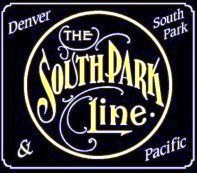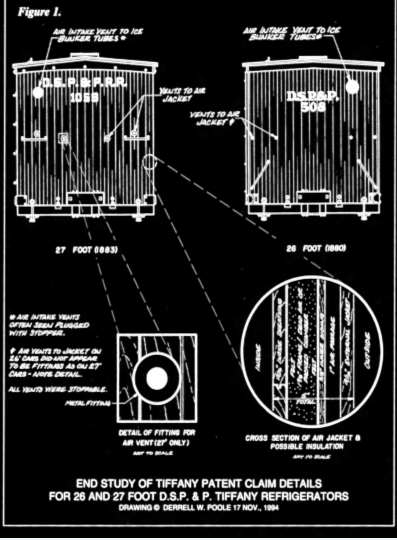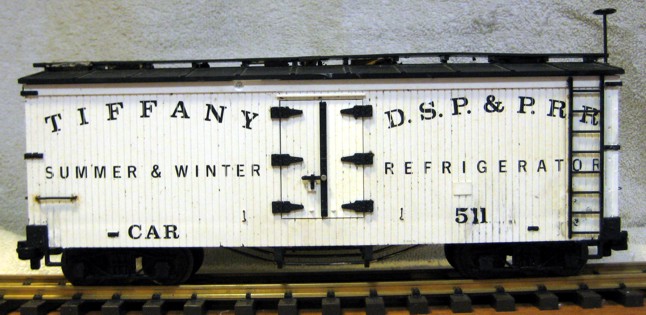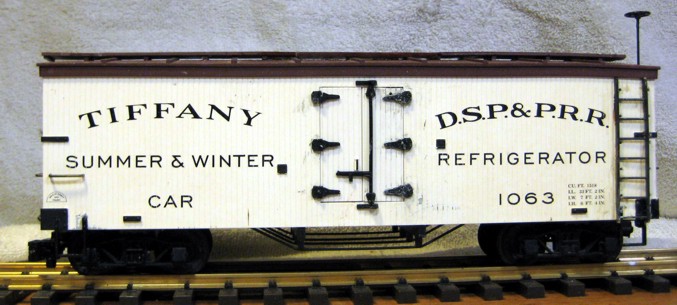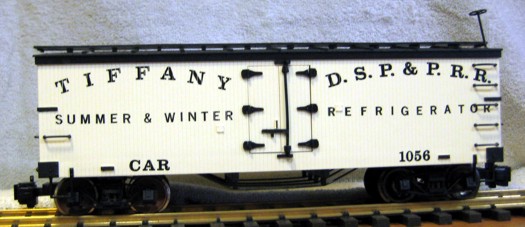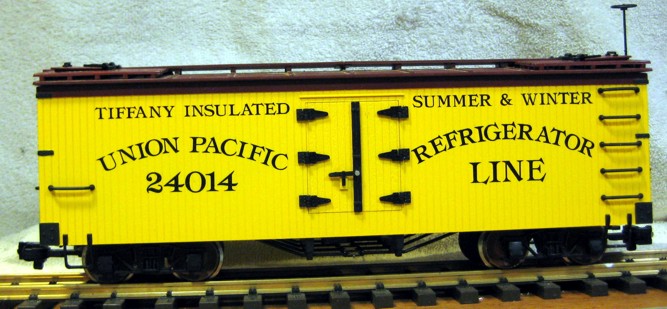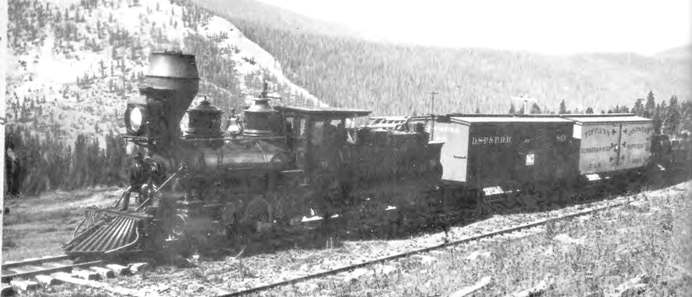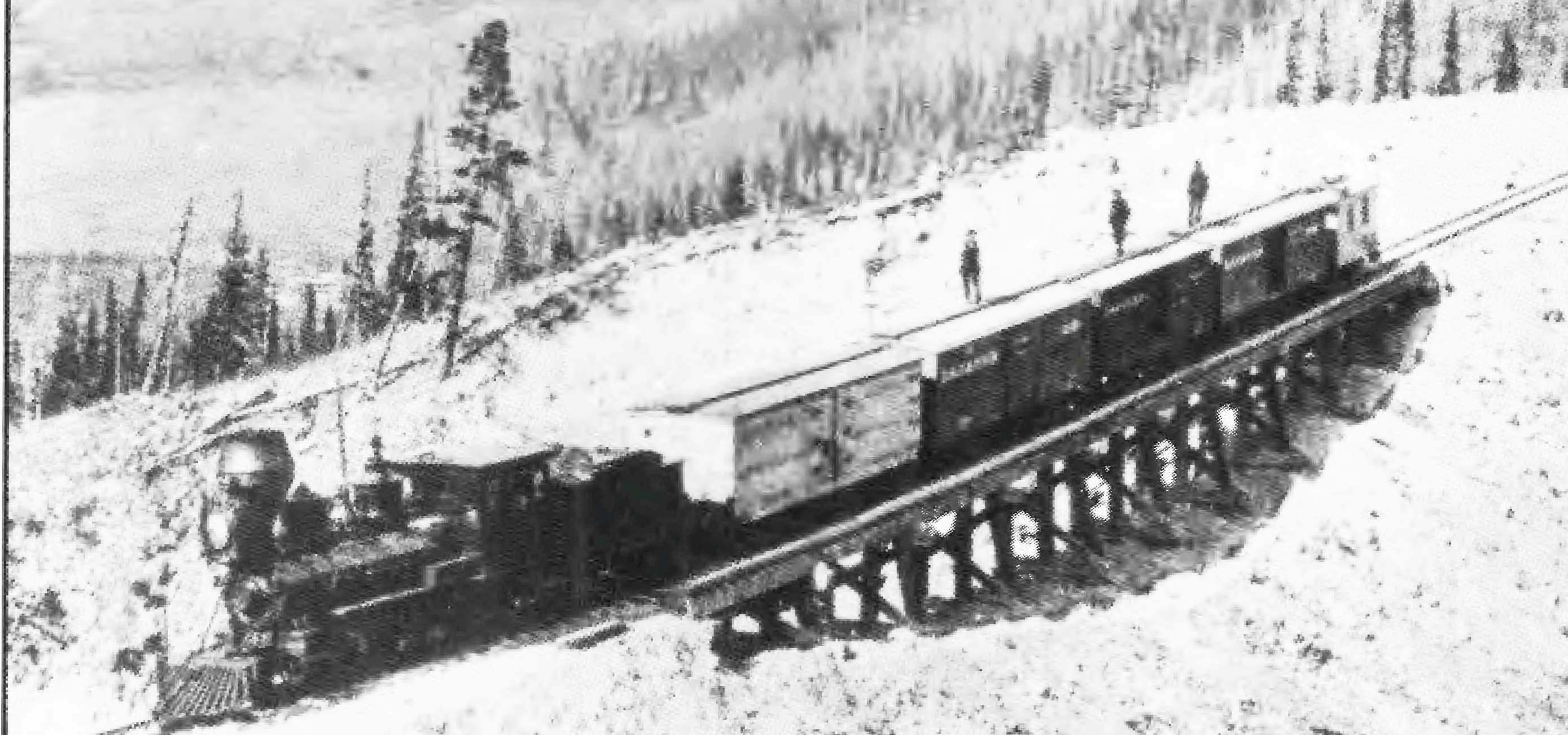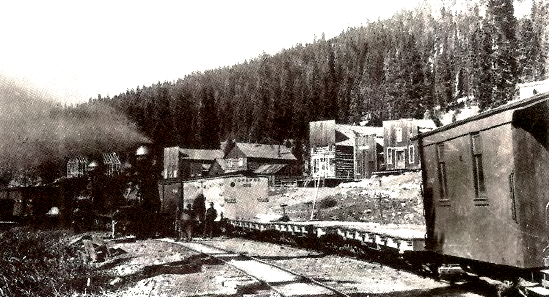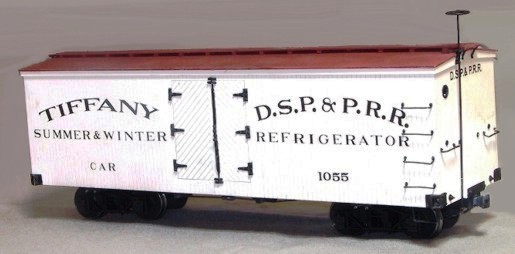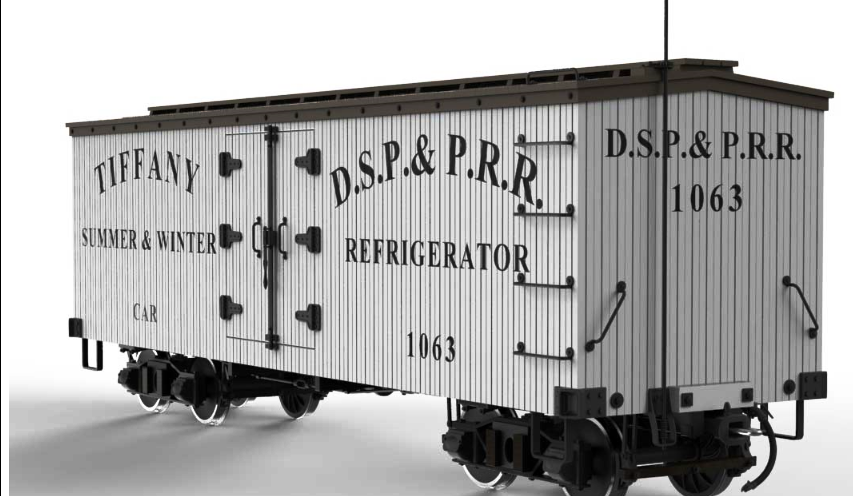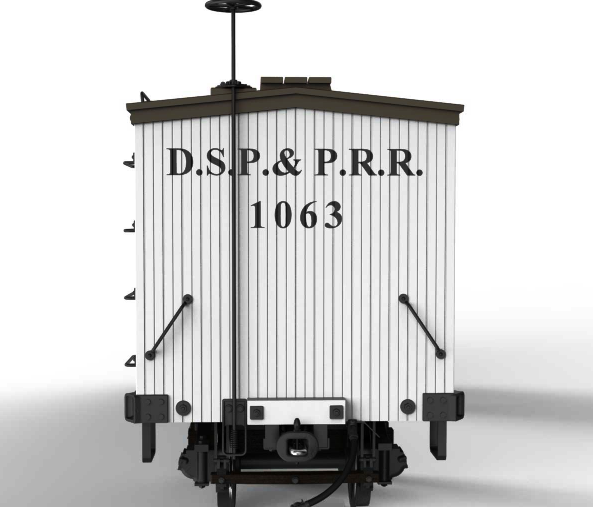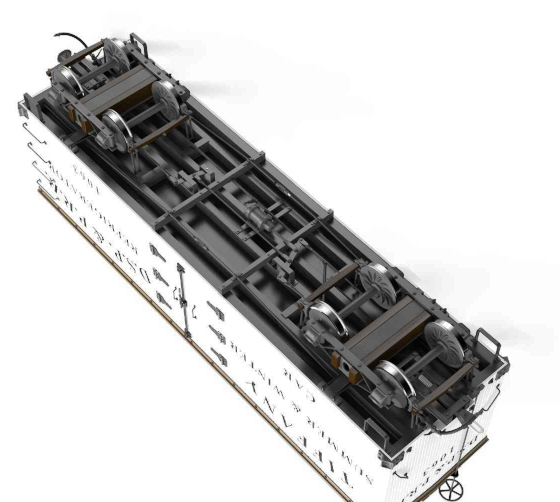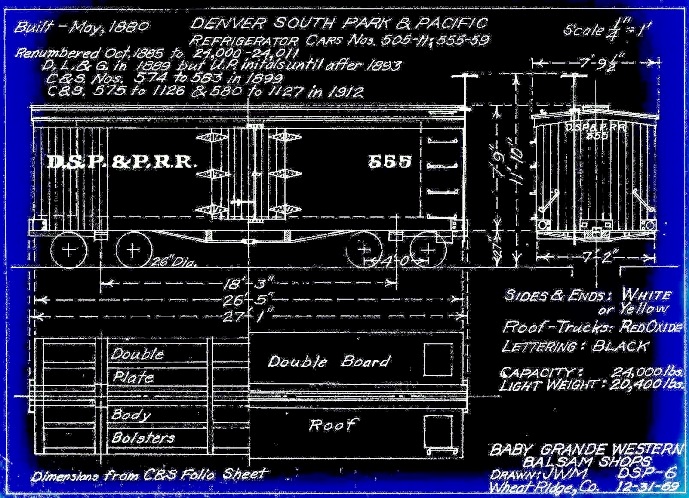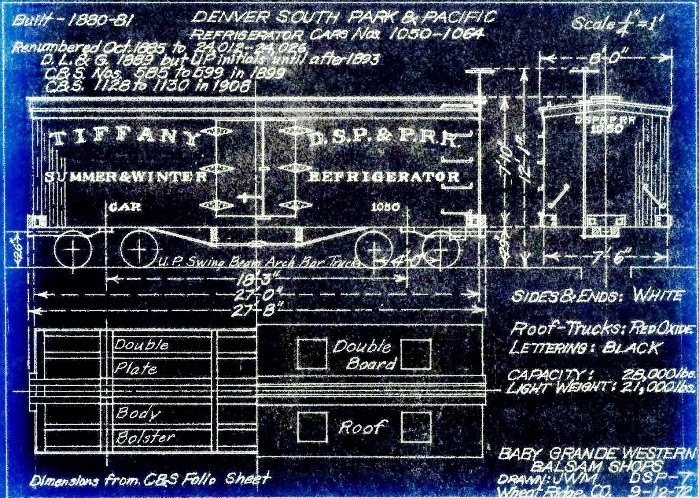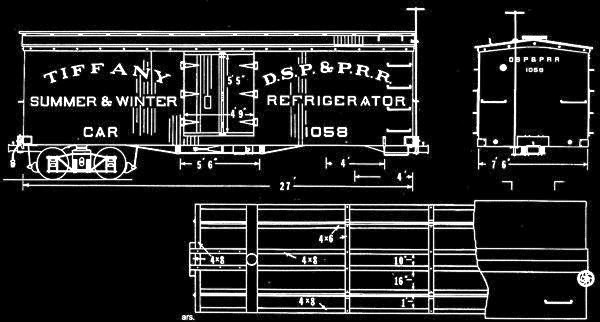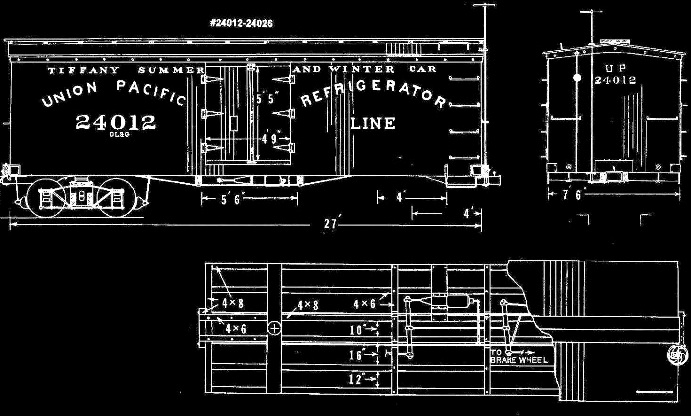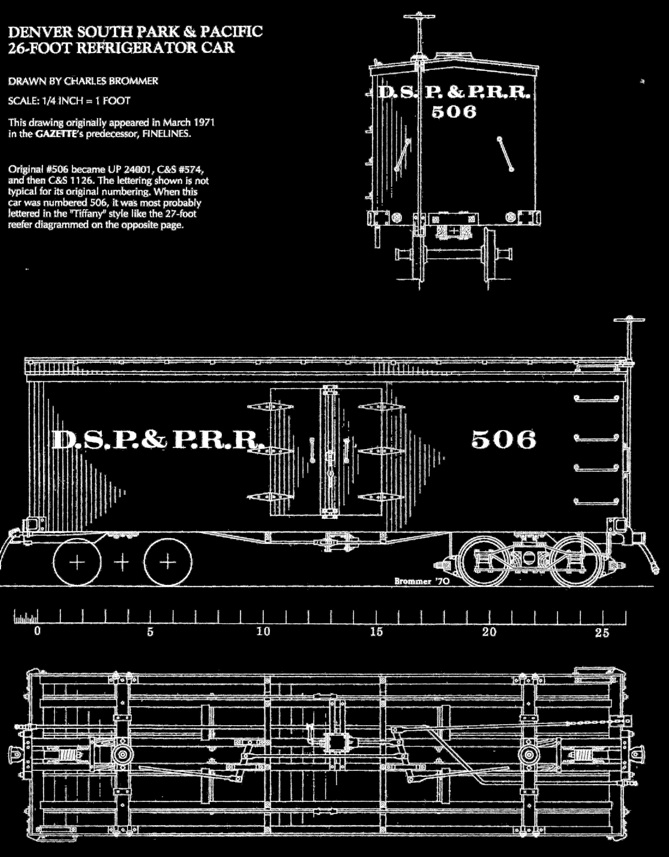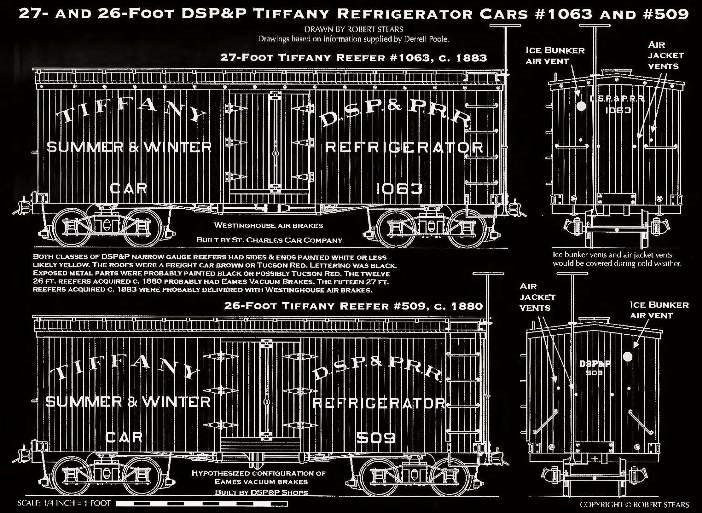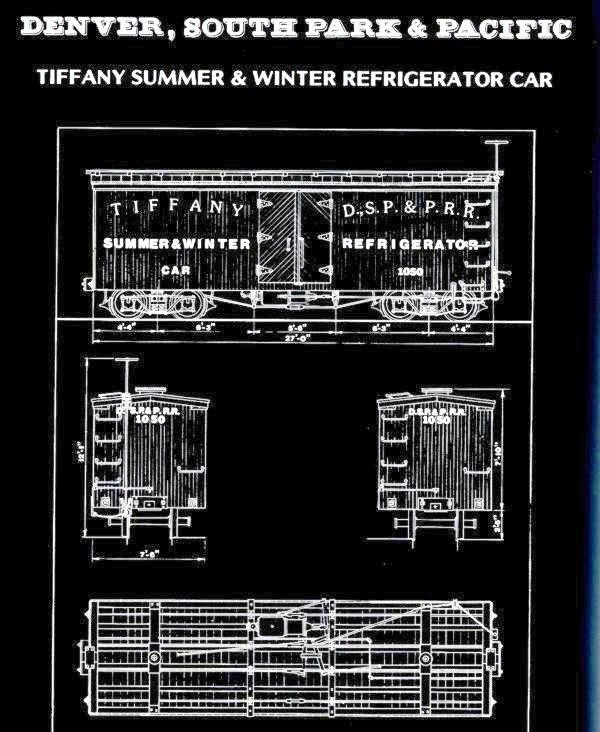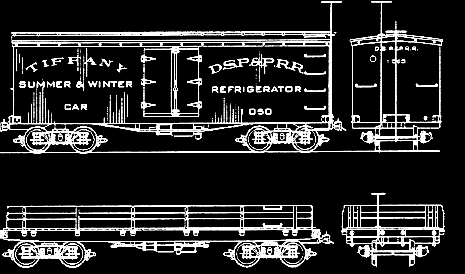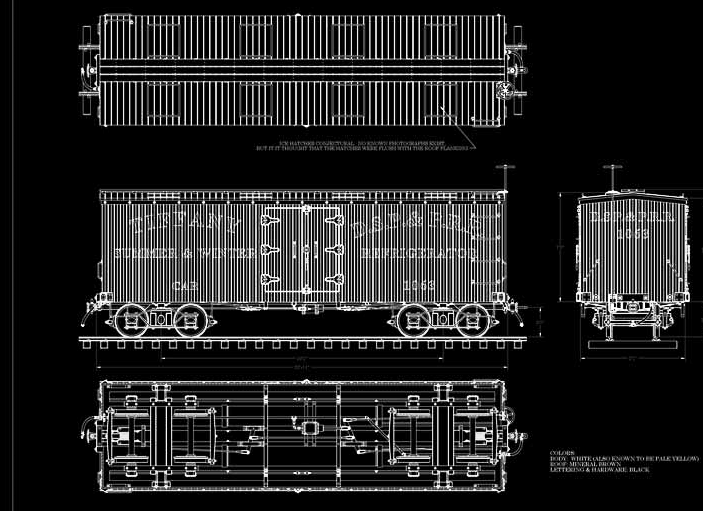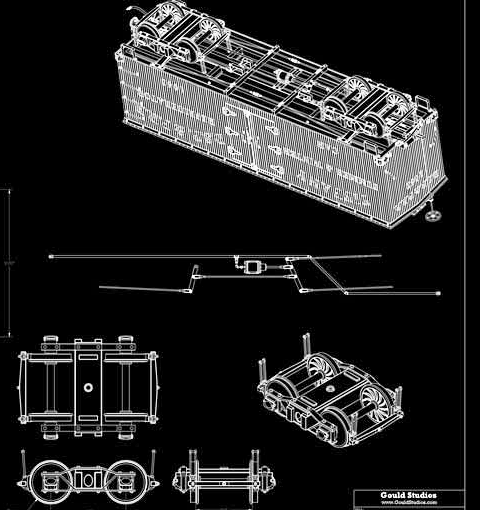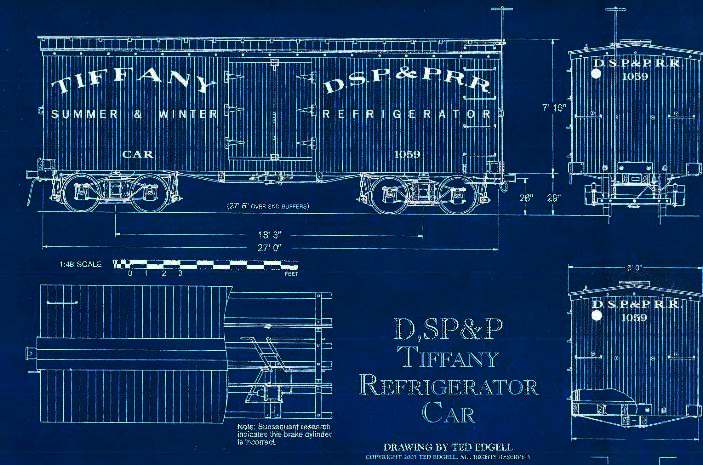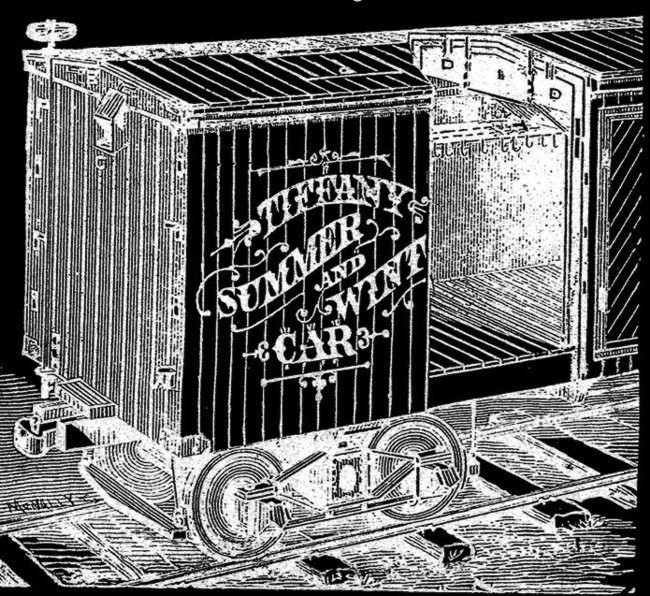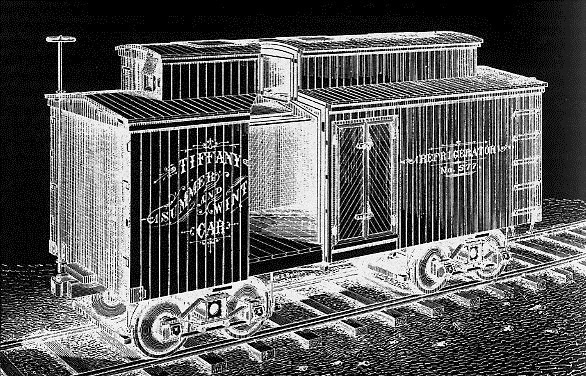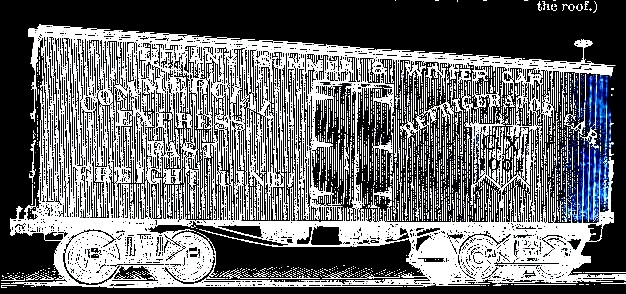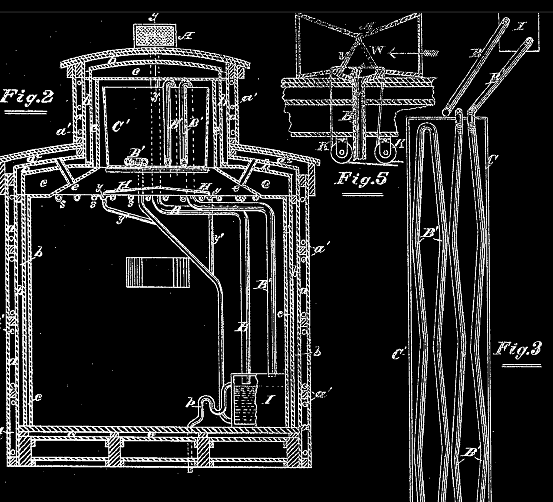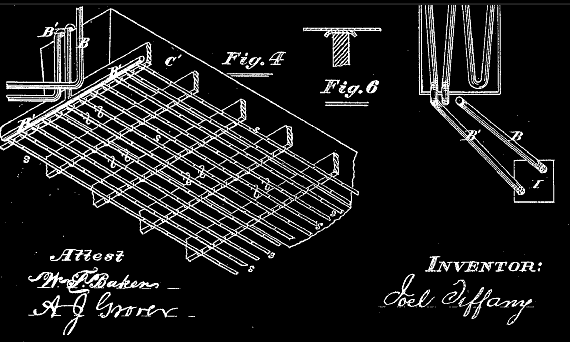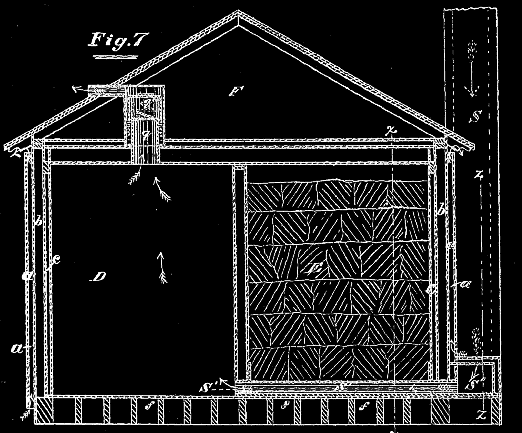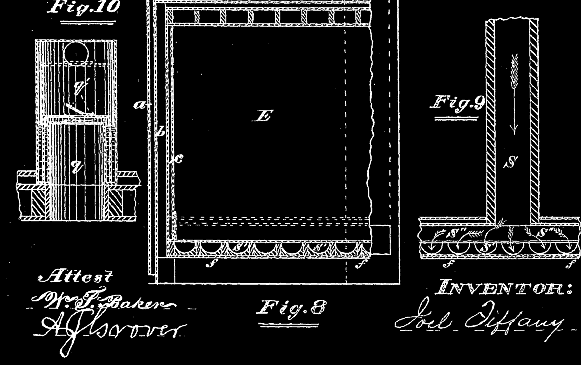|
Derrell
Poole's drawings of DSP&P reefers #508 and #1058 showing vent
location in end walls and an interpretation of the sidewall air
ducts passing through the car doors.
DSP&P 26 Foot Refrigerator Cars 505 to 511 and 555 to 559
DSP&P
26 foot Tiffany Reefers
505 -- 511 and 555 -- 559 1880
DSP&P
26 Foot Reefer #506 DSP&P
27 Foot Tiffany Patent Reefer #1050
DSP&P
27 Foot Tiffany Patent Reefer #1059
Joel Tiffany made his living licensing a number of patents, and
was never in the freight car building business.
His July 1877 patent covering "Improvements in
Refrigerator-Cars" is quite wordy and not especially clear on the
purpose or use of some of the "improvements" claimed.
The text and illustrations from his patent are shown
below. The basic concept of the patent claim was an insulated refrigerator car with air ducts in the walls to assist in circulating cold air, with vents in the car ends. The 1879 Tiffany advertisement clearly shows ice hatches with lift rings in the roof and a shielded vent on the end walls (see drawing below). There is no evidence of roof hatches on the photos of the South Park narrow gauge version of the Tiffany refrigerator cars, although vents in the end walls are clearly visible.
Within 18 months after the patent was issued, there were 95 Tiffany cars in service in the United States and 7 more in Europe. By this time the distinctive clerestory had been abandoned, replaced by a shallow, full-length ice bunker mounted directly under the carlines of the roof. This overhead ice bunker would remain one of the hallmarks of the Tiffany car throughout the life of the company and was one of the features that made it so successful. These V-shaped bunkers sloped gently toward the ends of the car, where a tank collected the melt-water. A drip-pan mounted slightly below the bunker caught any condensation and carried it too to the collection tank. The merit of the overhead bunker was proven by the comparatively small amount of ice needed. Tiffany claimed that on a trip between Chicago and Boston during the hottest part of the summer Tiffany cars used just Ĺ the ice needed by end-bunker cars. Indeed, this makes sense, as putting the ice at the highest (and hottest) point of the car provides for natural circulation of air, as the warmer air rises from the floor and the cooled air descends naturally to the floor. Cars with end-bunkers do not have this natural circulation, and thus either require some sort of artificial circulation or else cool the carís contents much better at the ends, adjacent to the bunkers than in the middle. Icing of the Tiffany cars was accomplished through several hatches mounted flush in the car roof . By 1880, Tiffany reportedly had 400 cars in service. By the summer of 1883 there were 1,000 Tiffany cars in service. Less than four years later (1887) there were 3,000. The Tiffany design appears to have gone out of favor by mid to late 1890's, as it was no longer illustrated in the 1898 edition of the Car Builders Dictionary.
|
|||||||||||||||||||||||||||||
|
Copyright © 2022 E. R. (Ross) Crain, P.Eng. email |
|||||||||||||||||||||||||||||

